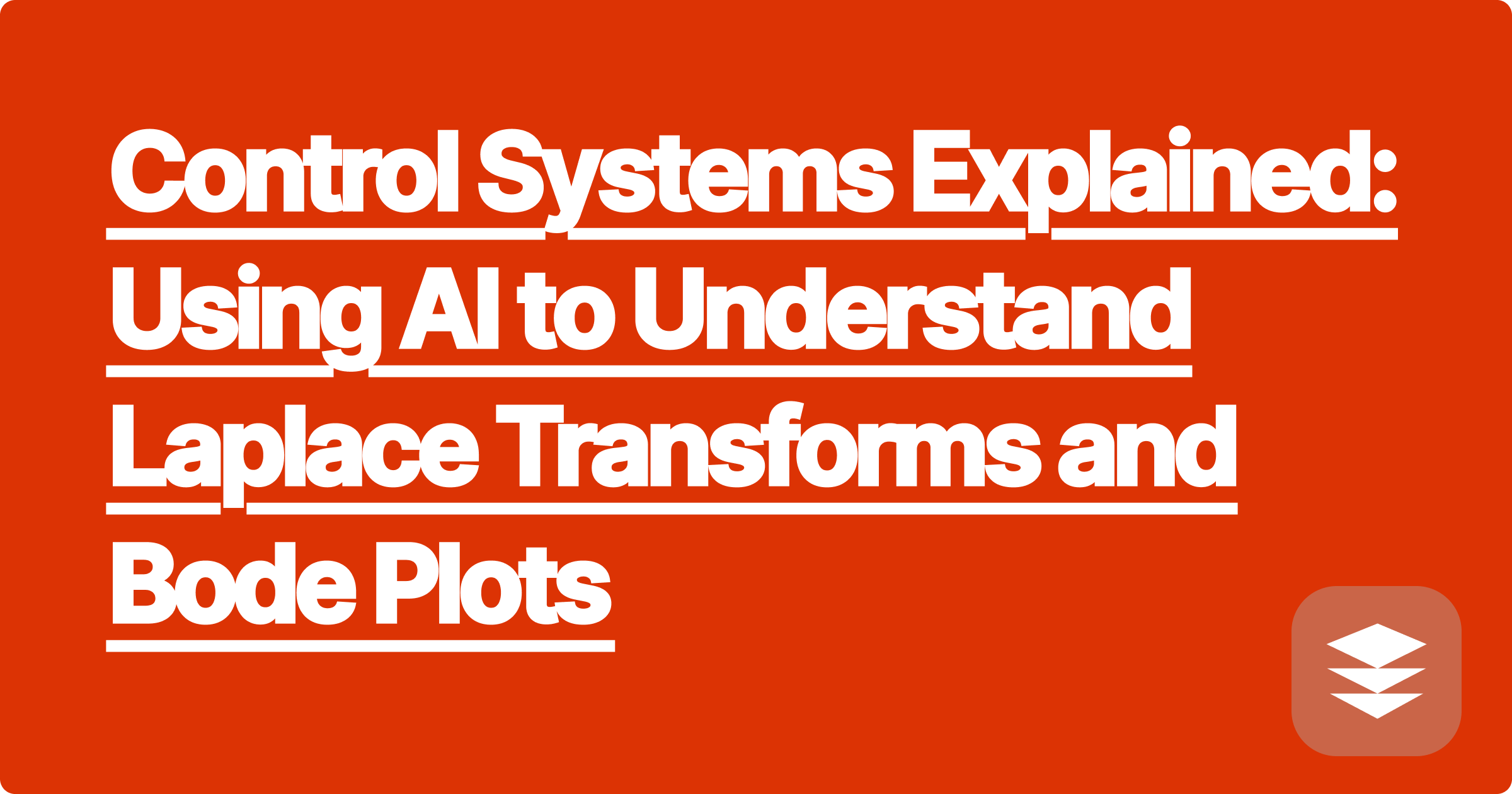
Control Systems is where math, physics, and engineering converge. It's also where many students hit a wall. The concepts are notoriously abstract. You're asked to take a physical system, model it with a differential equation, and then... transform it into the "s-domain" using a Laplace transform? And from there, create something called a Bode plot to analyze its frequency response?
If you're feeling lost, you're not alone. The leap from the time-domain to the frequency-domain is conceptually difficult, and the manual calculations are tedious and error-prone. Getting effective control systems homework help at the moment you're stuck is critical.
This is where a modern AI tutor becomes an indispensable tool. It can act as a Bode plot generator AI and a step-by-step Laplace transform calculator, but more importantly, it can help you visualize and understand the meaning behind these powerful but confusing techniques.
For most students, the difficulty boils down to these two key areas:
Instead of struggling alone, you can use an AI tool like GPAI Solver as your personal control systems expert. Here’s how you can tackle these difficult topics.
Let's say you have a function in the time domain, f(t) = e^(-at)cos(bt).
Imagine you've derived the transfer function for a system: G(s) = 10 / (s(s+1)(s+5)).
[Image: A screenshot of the GPAI Solver interface showing a transfer function on the left, and a perfectly rendered Bode plot (both magnitude and phase) on the right, with a text box underneath explaining the gain and phase margins. Alt-text: A Bode plot generator AI creating a graph and providing stability analysis.]
MethodManual Calculation / TextbooksGPAI SolverSpeed
Extremely slow and tedious.Instantaneous.
Accuracy
High risk of simple math errors.Computationally precise.
VisualizationRequires manual graphing, which is difficult.Generates clean, accurate plots automatically.
UnderstandingYou get a result, but may not know what it means.
Provides explanations that connect the graph to the theory (e.g., stability).
"I could do the math for a Bode plot, but I never really understood what gain and phase margin meant until GPAI plotted it and then explained it to me in a simple sentence. It was a total 'aha!' moment that my textbook couldn't provide."
Control systems is a subject where a picture truly is worth a thousand equations.
By using AI to handle the tedious calculations and generate clear visualizations, you can focus your mental energy on building an intuitive feel for how systems behave.
This is the key to succeeding not just in your homework, but on the exam and in your future career.
A: Yes. A sophisticated solver can parse and analyze complex transfer functions, including those with time delays (which introduce a phase shift) and zeros in the right-half plane (which can indicate instability).
A: It's a complementary tool. MATLAB is an incredibly powerful environment for professional simulation. GPAI Solver is a more accessible, on-demand tool for homework help and conceptual understanding. It excels at providing step-by-step explanations and natural language interpretations that MATLAB's command-line interface doesn't offer.
A: Use the GPAI Cheatsheet tool to upload your lecture notes and create a summary of control theory concepts. Then, use GPAI Solver to work through practice problems. You can check your manually-drawn Bode plots against the AI's perfect version to train your sketching skills.
Don't let the abstract nature of control systems hold you back. With a powerful AI tutor at your side, you can demystify Laplace transforms, master the art of the Bode plot, and build a deep, intuitive understanding of how to analyze and design the systems that run the modern world.
Ready to finally understand control systems?
[Try GPAI Solver today. Get the control systems homework help you need, from step-by-step transforms to instant Bode plots. Sign up for 100 free credits.]
Why Mechanics of Materials is All About Free-Body Diagrams: An AI Approach
Fluid Mechanics Homework: Solving Navier-Stokes with an AI Assistant
From Theory to CAD: How AI Can Help You Visualize 3D Designs
Master Heat Transfer: An AI Tool for Conduction and Convection Problems
Your Ultimate Guide to Surviving Dynamics: From Kinematics to Vibrations
How to Write a Professional Engineering Lab Report with AI-Assisted Analysis
The Smartest Way to Create a Machine Design Formula Sheet
Control Systems Explained: Using AI to Understand Laplace Transforms and Bode Plots
Why Did My Finite Element Analysis (FEA) Fail? An AI Debugging Guide
The Engineer's Toolkit: How AI Integrates Math, Physics, and Design